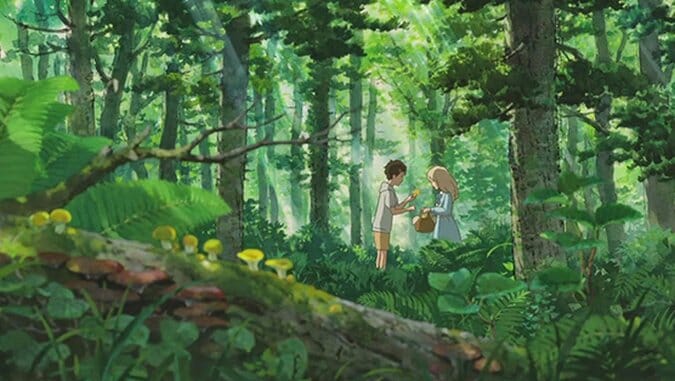When Marnie Was There

Ever since its creation 30 years ago, Studio Ghibli has been making magic out of the moving image, so much so that it’s not a stretch to claim that today—due to the foundation laid by directors Hayao Miyazaki (Spirited Away) and Isao Takahata (Grave of the Fireflies)—it’s become one of the most beloved animation studios in the world. However, with Miyazaki’s retirement, Ghibli might be on the verge of closing its doors, its latest film, When Marnie Was There, potentially set to be its last.
When Marnie Was There is also Ghibli’s first film without the involvement of neither Miyazaki nor Takahata—without them, the aforementioned “magic” seems to be noticeably absent. After all, Marnie director Hiromasa Yonebayashi, who became the studio’s youngest director with 2010’s The Secret World of Arrietty, tells simpler, notably folksier tales, which are admittedly some of the only Ghibli films that could find a place logically outside of the world of animation.
Marnie follows 12-year-old Anna (voiced by Sara Takatsuki), a perpetual outsider. She hates herself and her lot in life: She is adopted; at school, she doesn’t have any friends, often only finding solace through drawing; and she has constant asthma fits that are increasing in severity. So, in an effort to make Anna feel better, her foster mother sends her to the island of Hokkaido to spend her summer with her adopted grandparents. Upon arriving, Anna is immediately drawn to the nearby, abandoned Marsh House, where she discovers a blonde girl named Marnie (Kasumi Arimura). The two quickly strike up a friendship—though it isn’t clear if Marnie is real or Anna’s vivid-yet-imaginary friend, brought on by her loneliness and deep-seated desire for human connection.
-

-

-

-

-

-

-

-

-

-

-

-

-

-

-

-

-

-

-

-

-

-

-

-

-

-

-

-

-

-

-

-

-

-

-

-

-

-

-

-








































